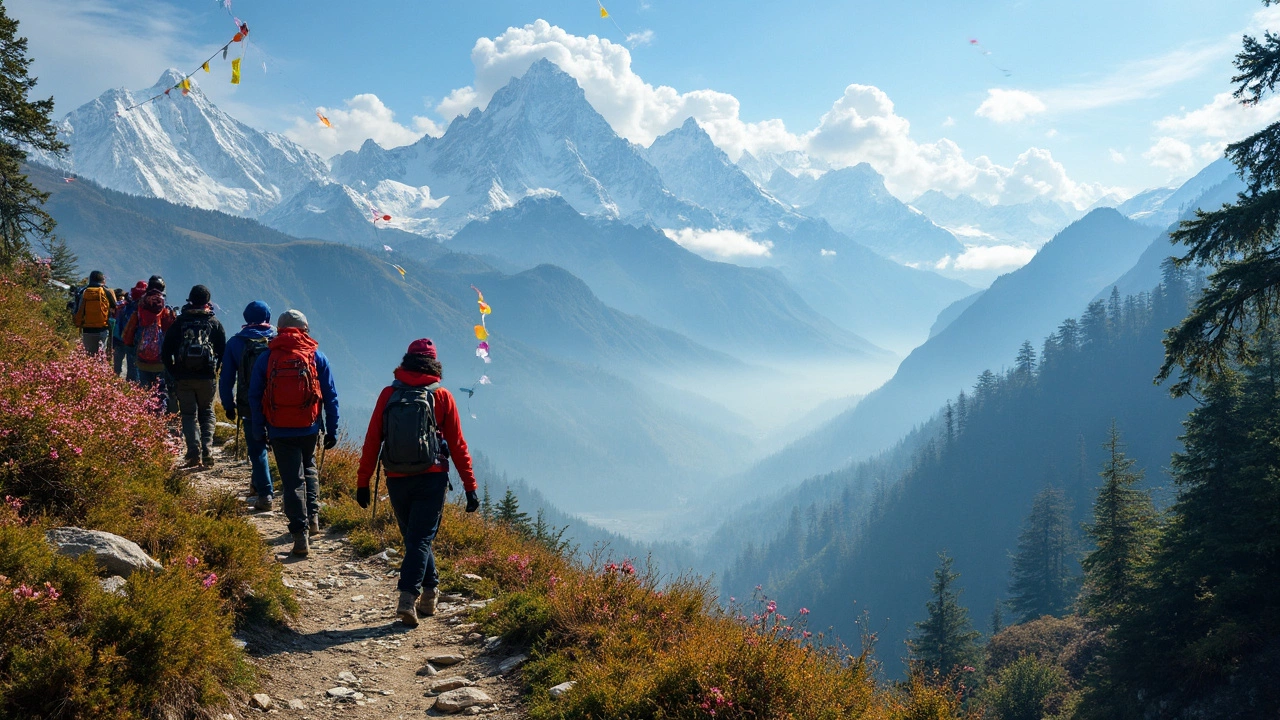SEARCH
Best Treks in India – Where to Hike and How to Prepare
Ever wondered why trekkers line up for the same trails year after year? It’s not just the views – it’s the mix of challenge, culture, and fresh air that makes a trek unforgettable. India has everything from gentle hill walks in the South to high‑altitude passes in the Himalayas. Below you’ll find the routes that consistently rank as the most rewarding, plus simple advice to keep you safe and comfortable.
Top Trekking Spots Across India
1. Valley of Flowers, Uttarakhand – This UNESCO site blooms with alpine flowers every summer. The trek is moderate (5‑6 km one‑way) and perfect for first‑time hikers who want a scenic payoff without extreme altitude.
2. Hampta Pass, Himachal Pradesh – A 15‑km route that drops you from lush green valleys to stark desert landscapes. It’s a classic 4‑day trek that balances steep climbs with stunning river crossings.
3. Kumara Parvatha, Karnataka – Known as the “King of the Hills,” this trek offers rugged rock‑scrambling and panoramic views of the Western Ghats. It’s challenging but doable in 2‑3 days for fit walkers.
4. Sandakphu, West Bengal – The highest point in West Bengal, Sandakphu gives you a clear view of Everest, Kanchenjunga, and other Himalayan giants. The trek is long (about 30 km) but the sunrise over the snow‑capped peaks is worth every step.
5. Chembra Peak, Kerala – If you’re in the South, Chembra’s heart‑shaped lake and gentle slopes make for a relaxed day trek. The trail is well‑marked and suitable for families.
These spots cover a range of difficulty levels, so you can pick one that fits your fitness and time constraints. Most of the routes have nearby villages where you can rest, eat local food, and learn a bit about the culture.
Gear & Safety Tips for Every Trek
Before you hit the trail, sort out the basics. A sturdy pair of hiking boots, a lightweight waterproof jacket, and a breathable base layer are non‑negotiable. The 3‑layer rule – base, mid, shell – works for any Indian climate. Your base layer wicks sweat, the mid layer adds warmth, and the shell blocks wind and rain.
Pack light but smart: a 2‑liter daypack, a water bottle (or hydration bladder), a headlamp, and a small first‑aid kit. Snacks should be high‑energy – think nuts, dried fruit, and energy bars – because meals on the trail can be sparse.
Acclimatization matters, especially on high‑altitude treks like Hampta Pass or Sandakphu. Spend a night at a lower elevation before pushing higher. If you feel dizzy or have a headache, slow down and hydrate – it’s better to lose a few hours than risk altitude sickness.
Local guides are a huge help. They know the trail, speak the language, and can point out hidden waterfalls or safe crossing points. Hiring a guide also supports the community, which often relies on trekking tourism.
Lastly, respect the environment. Carry a small trash bag, stay on marked paths, and avoid picking plants. India's trekking hotspots are fragile, and responsible travelers keep them beautiful for future adventurers.
Ready to plan your next trek? Pick a destination from the list above, check the best season (most routes are ideal between September and May), and start gathering gear. With simple prep and a sense of adventure, you’ll soon be standing on a summit, breathing in the crisp mountain air, and feeling proud of every step you took to get there.

Best Treks in India: Find Your Perfect Adventure
Wondering which trek stands out as the best in India? This article breaks down standout treks from north to south, comparing what makes each route special—scenery, difficulty, and the best time to go. Packed with tips and real advice, you'll get insider knowledge to plan your journey. Whether you want an easy introduction or a serious challenge, this is your go-to guide for picking the right trek. There's a trail perfect for every kind of hiker.
Continue reading